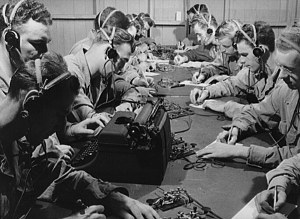About this site
This site addresses two subjects — getting/upgrading an amateur radio license and learning to head-copy Morse code.
The morseDX license sessions make it easy for individuals to prepare for their first ham license and for current radio amateurs to upgrade to a higher class. The exact pool questions and answers published by the NCVEC (per FCC direction) are covered.

The license exam preparation sessions consist of both learning and testing components. All three license classes are covered — Technician, General, Amateur Extra — and are available simultaneously.
In learning mode, questions are presented in bite-sized chunks that have to be answered correctly before the next chunk is presented. The entire pool of questions can be covered an unlimited number of times.
In testing mode, the questions are chosen randomly from the appropriate pool — 35 questions for the Technician and General classes, 50 for Amateur Extra. The score attained is shown for immediate comparison with the 74% passing grade required by the FCC. It is advisable to take many tests as a valuable part of the learning process and in order to gain confidence for taking the actual examination.
Several audio distractions can be selected in both the learning and testing modes as preparation for a potentially less-than-ideal exam environment. For example . . .
The Morse code sessions of the morseDX platform grew out of the frustration expressed by many individuals who tried learning using antiquated methods. Many teaching techniques were developed over the last 170 years and unfortunately some have survived to this day.

Old methods persist that advise learning at a very low speed, five words per minute (or less!), copying each character on paper. This is absolutely the worst possible way to learn as it enables the brain to count individual dots and dashes instead of coercing it to recognize each character as a unique, unified element. As a result, the requisite neural connections are not formed.
Progress to higher speeds with these conventional techniques is slow and painful. A limit of about 13 wpm is eventually reached. Beyond this point, the average human brain can no longer count individual dots and dashes. And the hand finds it difficult to write comfortably for any significant length of time. Because of this, legions of radio amateurs got stuck at around this speed for many years.
Did you ever wonder why for decades the FCC placed the code requirement for the General and Advanced classes of amateur radio licenses at the rather odd figure of 13 wpm? Now you know!
Moving beyond 13 wpm using conventional techniques essentially requires a restart of the learning process. This is because a fundamental mental shift needs to be made. You have to be able to recognize a Morse character as a distinct sound element, not as a countable series of dots and dashes.

Crutches exist to help the transition process. Probably the one best known is the Farnsworth method, which adds more spacing between characters. Unfortunately, it unintentionally hampers effective learning. It gives the brain more time to think instead of decoding on reflex. And it also hurts learning proper keying!
Despite these drawbacks, individuals who were successful at clearing the difficult hurdle of 13 wpm found that moving on to speeds considerably faster was relatively easy — not a piece of cake, but not all that difficult. That is very telling because it validates that true progress is made once counting and writing are eliminated.
On this basis, morseDX takes an approach radically different from conventional methods. The lowest speed is 15 wpm. And the Morse code packet is coupled to the sound of the character in spoken English, not to a sequence of dots and dashes.
It is also very important to learn to capture and hold a serial stream of letters before we are able to form words, sentences, and complete thoughts. And it is monumentally easier to learn this skill with voiced English rather than Morse code.
This process is fundamentally different from reading, where the eye-brain combination decodes meaning in serial/parallel fashion. That is, we don’t read by looking at each word in isolation. Our brain is constantly aware of several words behind and ahead, deriving the context and meaning of each new word.
The underlying motivation behind the development of morseDX was that learning code had to be a gradual, subconscious, background process built on top of the ability to readily form thoughts from spelled English letters. Primary attention is focused on listening and deriving meaning and context from words and sentences, not on learning code. The fact that Morse characters gradually replace English becomes virtually unnoticed.
Modern processing techniques and the deployment of broadband Internet now permit effective web-based teaching methods. They were not economically feasible even just a few years ago.
For further reading and motivation, take a look at The Art and Skill of Radio-Telegraphy by William Pierpont – arguably the best work on learning Morse code. The material covered is fascinating, spanning close to a hundred years of radio telegraphy.
A very interesting book on how we read: Dehaene, Stanislas, Reading in the Brain: The New Science of How We Read, New York, Penguin Group, 2009, Print (Paperback)
And if you want a fascinating comparison of the telegraph and the Internet, read Tom Standage, The Victorian Internet: The Remarkable Story of the Telegraph and the Nineteenth Century On-line Pioneers, Walker and Company, 2007, Print (Paperback)

